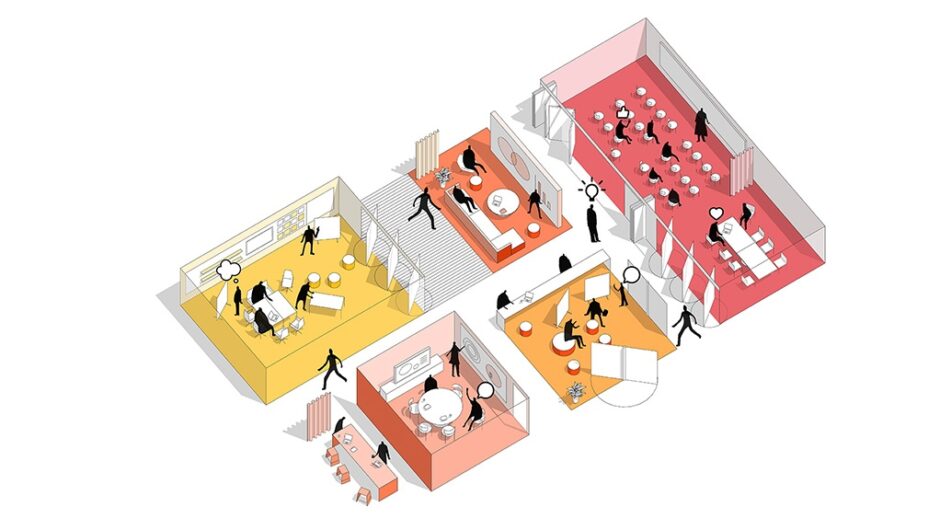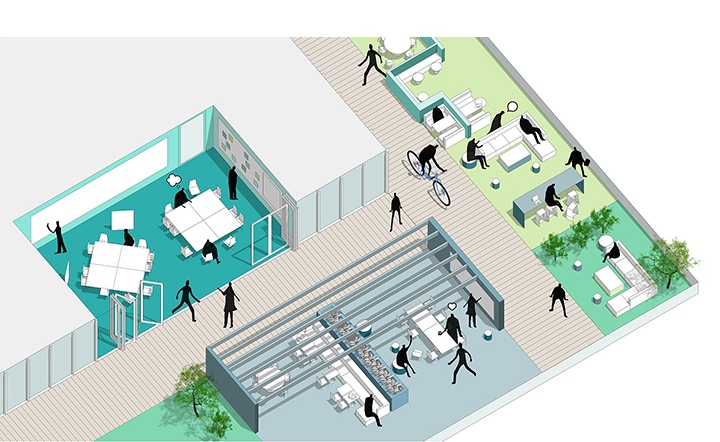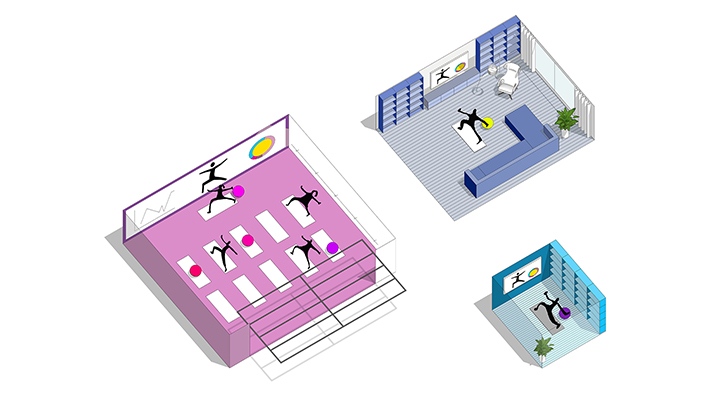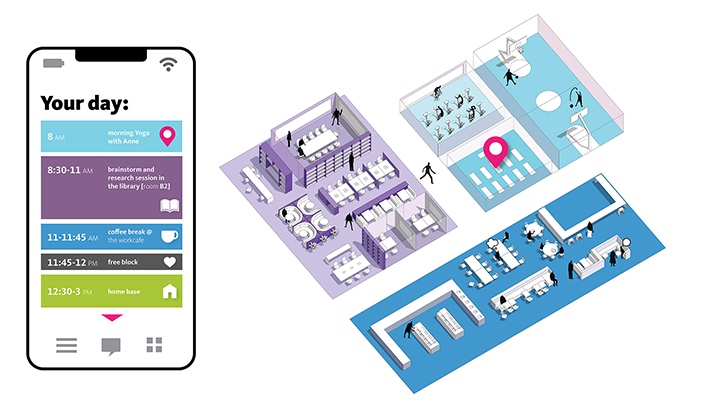Here are four strategies that companies, real estate leaders, and developers can implement to provide a new value proposition for the workplace experience.
1. Redefine the Purpose of the Office.
We are working with many global Fortune 100 companies that believe the reason why people will come together in the future is to collaborate, and that focus work can be done at home. Their future office will transform into an environment where the distinction between amenities and workplace is blurred. The concept is based on the assumption that their mobile workforce will demand highly-serviced spaces, which are focused on collective decision making when teams come into the office. Under this premise, spaces will need to reconfigure and scale depending on the capacity to stage events for various teams over the course of a day or week, and the company will need to take on more responsibility in terms of hosting, scheduling and operations.
The open office is shifting from a variety of space types to a collaborative, hospitality driven environment. Buildings that satisfy the need for human connection will have a competitive advantage.
2. Activate the Ground Floor.
We are working with a financial services firm that is seeking highly visible, multi-function space on the ground floor of the same building in which it is currently a tenant, to host both internal and external events with lots of food services and audio visual capabilities. The space will be operated exclusively by the client, and will serve as a brand extension of their workplace on the floors above. The design is highly flexible, as a single large townhall space for either external investor events, or divisible into separate rooms for internal functions.
3. Instill a Hospitality Mindset.
The office must not only prioritize safety, health, and comfort as a foundation, but also support overall wellbeing by reducing stress and anticipating needs. There are opportunities for programming to nudge healthy behaviors through access and opportunities, pop up areas to provide flu-shots and mental health counseling, as well as reservable small group fitness classes in the office that can be projected via Zoom to employees that are working remotely.
4. Predictive Analytics.
A recent study for a global beverage company has uncovered that in this new reality, choice causes unnecessary levels of anxiety because of spontaneous interactions and unplanned crowding. Eliminating touchpoints and simplifying the user journey alleviates chaos by reducing points of intersection and contact. Much of this information was gleaned from a propriety Gensler tool, Graph, which quantifies relationships between space and experience. Similar data insights can be applied by real estate leaders to better predict user needs – providing services, products, and food offerings quickly and dynamically before they even arrive at the workplace. A seamless integration of this virtual model could be implemented with lunch, which could be pre-packaged in advance through an app and delivered touch-free to one’s desk.
The Future of Amenities is About Culture
With such a shift in workforce scale and distribution, there is a tremendous opportunity for real estate leaders to rethink roles within organizations, operational structures, distributed offerings and environments to host teams when they come together. What we expected in our office amenities before is shifting to reflect the expectations of our teams for a safer return together. Wellness is no longer a workplace buzzword and will extend far beyond hand sanitizing stations. Some of the biggest changes we see and integrate will be behavioral and cultural instead of drastically different design solutions that are only necessary short term.
Providing a human-centric experience for employees will be the rule, rather than the exception, for progressive organizations to attract top talent. Rather than going back to our work lives the way they were, 2020 has presented an opportunity for leaders to rethink their employee value proposition.
Editor’s note: this article originally appeared on Corenet Global’s The Source.





